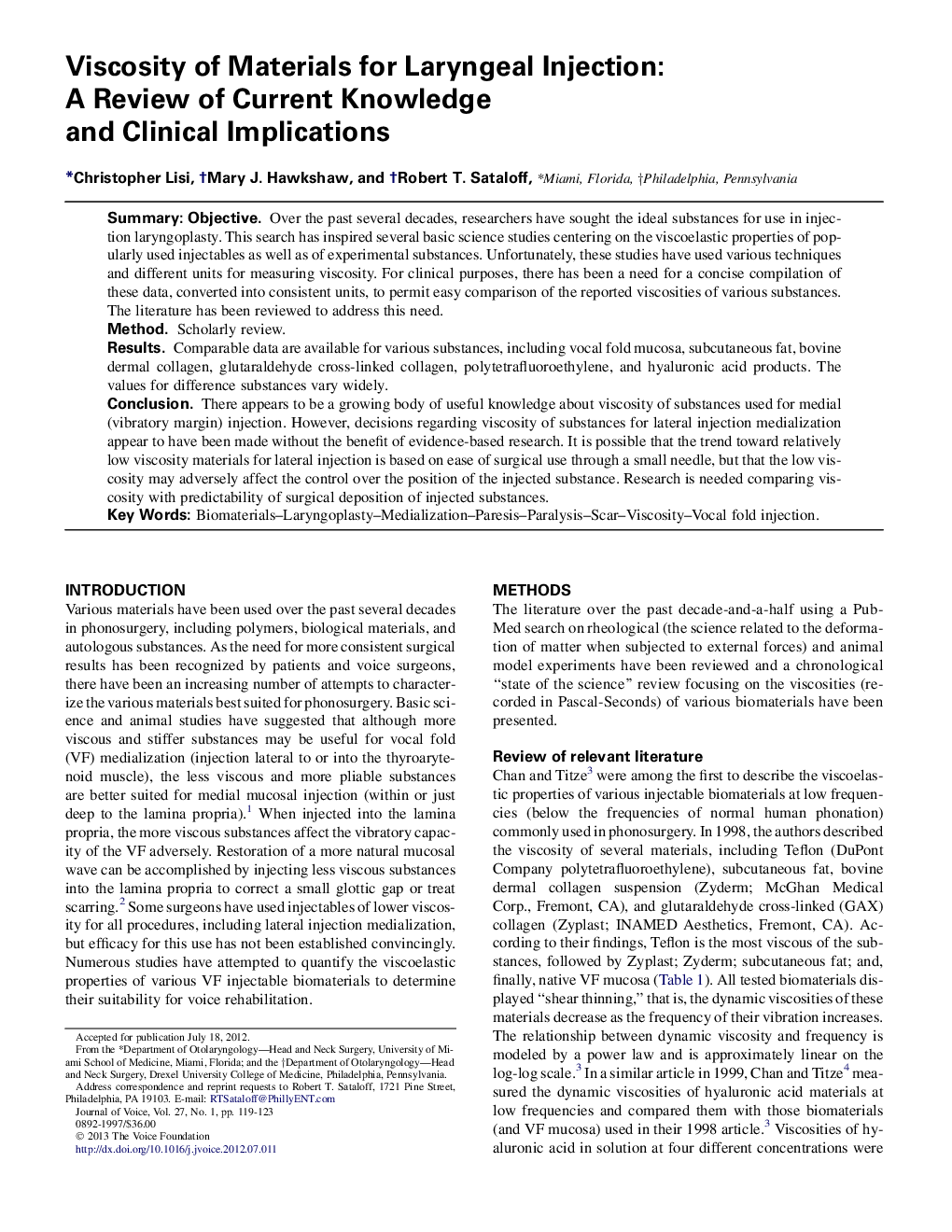| Article ID | Journal | Published Year | Pages | File Type |
|---|---|---|---|---|
| 1101660 | Journal of Voice | 2013 | 5 Pages |
SummaryObjectiveOver the past several decades, researchers have sought the ideal substances for use in injection laryngoplasty. This search has inspired several basic science studies centering on the viscoelastic properties of popularly used injectables as well as of experimental substances. Unfortunately, these studies have used various techniques and different units for measuring viscosity. For clinical purposes, there has been a need for a concise compilation of these data, converted into consistent units, to permit easy comparison of the reported viscosities of various substances. The literature has been reviewed to address this need.MethodScholarly review.ResultsComparable data are available for various substances, including vocal fold mucosa, subcutaneous fat, bovine dermal collagen, glutaraldehyde cross-linked collagen, polytetrafluoroethylene, and hyaluronic acid products. The values for difference substances vary widely.ConclusionThere appears to be a growing body of useful knowledge about viscosity of substances used for medial (vibratory margin) injection. However, decisions regarding viscosity of substances for lateral injection medialization appear to have been made without the benefit of evidence-based research. It is possible that the trend toward relatively low viscosity materials for lateral injection is based on ease of surgical use through a small needle, but that the low viscosity may adversely affect the control over the position of the injected substance. Research is needed comparing viscosity with predictability of surgical deposition of injected substances.
